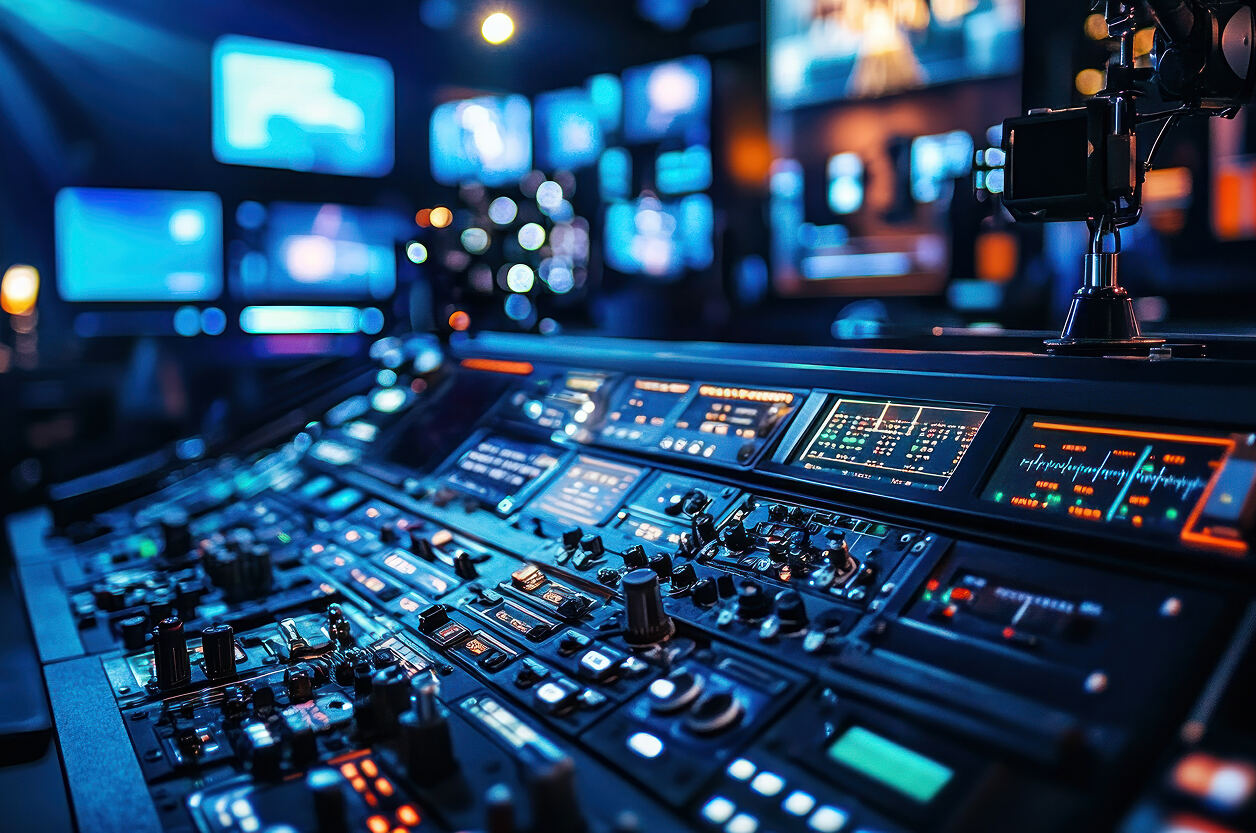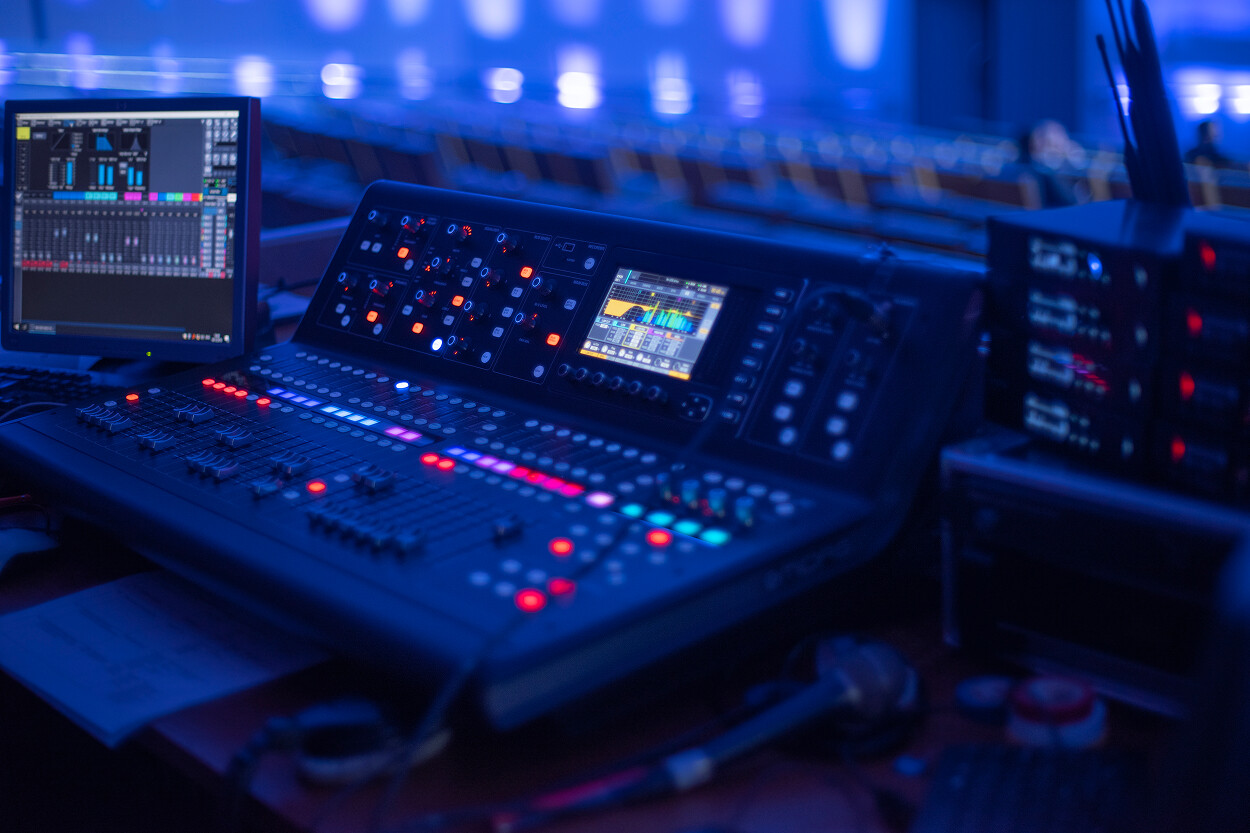How Edge AI and Hardware Acceleration Redefine Real-Time Transcoding in Live Production

The Pressure of Live Production
In live broadcasting, every millisecond counts. Whether it’s a sports event, a concert, or a breaking news feed, audiences expect seamless quality — instant switching, high-resolution streams, and zero downtime. Traditional server-based architectures often struggle to meet these demands, especially as video resolutions and bitrate requirements continue to grow.
That’s where edge AI comes into play. Combined with hardware acceleration through FPGA and ASIC devices, it enables real-time transcoding and adaptive video delivery directly at the network’s edge — close to where data is captured and consumed. This shift marks a fundamental transformation in live production: from centralized cloud-heavy workflows to distributed, intelligent edge systems capable of handling AI inference, encoding, and streaming in real time.
Why Edge AI Matters in Modern Broadcasting
The explosion of live streaming platforms, hybrid events, and cloud-connected cameras has created a need for faster and smarter processing. Traditional data centers can’t always provide the low latency or bandwidth efficiency required for ultra-high-definition live feeds.
Edge AI bridges this gap by processing video closer to the source. Instead of sending raw 4K or 8K video streams to distant cloud servers for encoding and analysis, smart edge nodes handle these tasks locally. This not only minimizes transmission delays but also lowers operational costs by reducing network load.
When paired with FPGA and ASIC acceleration, edge AI systems can run deep learning models, perform format conversion, and handle transcoding with real-time precision — often within a few milliseconds per frame.
The Challenge of Real-Time Transcoding
Transcoding — converting one video format, resolution, or bitrate into another — is one of the most resource-intensive tasks in media processing. For live production, it must happen instantly, without visible delay or quality degradation. In modern broadcast environments, that also means interoperability with open standards such as ST 2110, IPMX, and SMPTE 2022-6 — ensuring that real-time transcoding nodes can integrate seamlessly into hybrid IP and SDI workflows.
Traditional CPU-based systems can manage a few parallel HD streams, but when scaling up to multiple 4K feeds or high-frame-rate formats, performance bottlenecks appear. GPU acceleration helps, but it comes with power and cost limitations that make large-scale deployment impractical for every edge node.
FPGAs (Field-Programmable Gate Arrays) and ASICs (Application-Specific Integrated Circuits) solve this problem by providing dedicated hardware paths for specific tasks like encoding, decoding, and AI-based enhancement. These chips can execute complex operations in parallel, ensuring minimal latency and maximum efficiency — exactly what real-time transcoding demands.
How FPGA and ASIC Acceleration Works
FPGAs are reconfigurable hardware devices that can be tailored for each production workflow. In live production, they handle operations like H.264/H.265/AV1 encoding, noise reduction, and frame interpolation — all optimized at the hardware level. Because the logic can be reprogrammed, broadcasters can adapt their FPGA pipelines to new codecs or AI models without replacing hardware.
ASICs, on the other hand, are purpose-built chips optimized for specific tasks. They offer superior performance and energy efficiency once the design is finalized. In live production environments, ASICs often manage repetitive workloads such as transcoding standard streams for distribution, freeing CPUs and GPUs for editorial or graphics-intensive tasks.
When integrated with edge AI frameworks, both FPGAs and ASICs serve as computational anchors for neural networks handling denoising, color correction, or object tracking — allowing broadcasters to deliver enhanced video quality in real time.
Combining AI and Hardware Acceleration
Edge AI in live production goes far beyond format conversion. It’s about adding intelligence to every step of the video workflow. AI models running on FPGA or ASIC hardware can analyze and optimize content dynamically: adjusting bitrates based on scene complexity, predicting motion for smoother transitions, or applying adaptive upscaling for low-resolution feeds.
For example, an FPGA-based encoder can integrate an AI model that detects fast motion and adjusts compression ratios accordingly to prevent visible artifacts. Similarly, an ASIC-powered transcoding unit can host an embedded inference engine that classifies content type — sports, talk show, news — and selects the best encoding profile in real time.
These capabilities turn transcoding from a static, rule-based process into a smart, context-aware system that improves both efficiency and visual quality.
Real-World Use Cases in Broadcasting
The advantages of edge AI with FPGA and ASIC acceleration are already visible across multiple areas of live media production:
– Remote event streaming: Edge devices at venues process raw camera feeds into broadcast-ready formats, drastically reducing the need for satellite or high-bandwidth links.
– Sports broadcasting: FPGA modules enhance frame rate conversion and instant replay generation, while AI models track players and automate camera direction.
– Newsrooms and field reporting: Lightweight ASIC-based encoders enable live HD and 4K streaming directly from the field, even over limited connectivity.
– Hybrid cloud workflows: Edge transcoders handle initial encoding, while centralized cloud systems manage distribution, storage, and post-processing — balancing cost and performance.
Each of these scenarios proves the same point: moving intelligence and compute power closer to the camera or encoder transforms the economics and reliability of live production.

Architecture of Edge AI Transcoding Systems
A typical edge AI transcoding architecture combines three main layers:
- Edge Processing Layer — FPGA/ASIC nodes perform real-time transcoding, AI inference, and compression optimization on-site.
- Orchestration Layer — Cloud-based control systems manage updates, monitoring, and load balancing across multiple locations.
- Distribution Layer — Compressed and enhanced streams are sent to CDN or broadcast infrastructure for global delivery.
These systems rely on adaptive bitrate streaming (ABR) and AI-based encoding decisions to maintain consistent quality under fluctuating network conditions. The orchestration layer can dynamically allocate processing tasks between nodes, ensuring reliability even during large-scale live events.
The Role of Low Latency and Determinism
One of the biggest benefits of FPGA and ASIC acceleration is deterministic latency. Unlike CPUs or GPUs, these chips don’t suffer from unpredictable delays caused by multitasking or operating system overhead. In live broadcasting, where even a few frames of delay can ruin synchronization, this determinism is invaluable.
Edge AI amplifies this advantage. Machine learning models running directly on the FPGA fabric or ASIC logic can process motion prediction, scene segmentation, or object detection in microseconds. Together, they achieve near-zero latency between capture, processing, and transmission — enabling genuinely real-time experiences for audiences.
Energy Efficiency and Sustainability
Power efficiency is increasingly critical for broadcasters operating 24/7. Traditional data centers require massive cooling and power budgets, while edge AI systems built on FPGA and ASIC hardware can deliver higher throughput per watt.
By processing data locally, these systems reduce the need for long-distance transmission and large cloud compute clusters. This approach not only saves energy but also supports sustainability goals by minimizing carbon footprints across global production networks.
As sustainability becomes a key KPI in the media industry, energy-efficient edge AI will play a growing role in reducing environmental impact while maintaining performance standards. As broadcasters move toward greener operations, FPGA-based edge architectures are becoming a cornerstone of sustainable media infrastructure — delivering higher performance per watt and reducing reliance on power-hungry centralized data centers.
The Future of Live Production: Predictive and Autonomous Systems
The evolution of edge AI is heading toward predictive and autonomous operations. Future systems will not just respond to network conditions or content type — they’ll anticipate them.
AI-driven transcoding engines could preemptively adjust encoding parameters based on historical data, audience behavior, or even regional bandwidth statistics. FPGA and ASIC platforms will host adaptive AI models capable of self-tuning for optimal performance, pushing live production toward self-managing ecosystems.
As open standards like IPMX and ST 2110 gain traction, hardware-accelerated edge AI will integrate seamlessly into hybrid broadcast infrastructures — merging traditional production with cloud and AI workflows in one continuous, intelligent pipeline.
Business Value and ROI
Deploying FPGA and ASIC acceleration at the edge delivers measurable ROI for broadcasters and streaming platforms. Reduced latency improves viewer retention, while local transcoding minimizes operational costs. Hardware-based AI pipelines extend equipment lifespan by handling new codecs or models through firmware updates instead of hardware replacement.
Moreover, the flexibility of reconfigurable logic allows broadcasters to adapt quickly to market trends — for example, adding support for emerging formats like 8K or 120 fps live feeds without massive infrastructure changes.
The result is a leaner, smarter, and more scalable broadcasting ecosystem built to meet the ever-growing expectations of global audiences.
Promwad Insight
At Promwad, we develop FPGA- and ASIC-based platforms for real-time video processing, transcoding, and edge AI acceleration. Our engineers design low-latency media pipelines optimized for ST 2110 / IPMX interoperability, power efficiency, and scalability across live broadcast, ProAV, and OTT applications.
AI Overview
Key Applications: Real-time video transcoding, adaptive bitrate encoding, and AI-based content optimization in live broadcasting and streaming.
Benefits: Ultra-low latency, reduced bandwidth use, enhanced video quality, lower energy consumption, and scalability for large events.
Challenges: Integration with existing IP and cloud workflows, balancing flexibility and determinism, and managing thermal constraints of dense FPGA/ASIC deployments.
Outlook: Edge AI combined with FPGA and ASIC acceleration will define the next era of live production — where real-time, intelligent, and sustainable media processing happens directly at the edge.
Related Terms: hardware-accelerated transcoding, AI-based encoding, low-latency broadcasting, edge computing in media, FPGA/ASIC design for live video.
Our Case Studies
